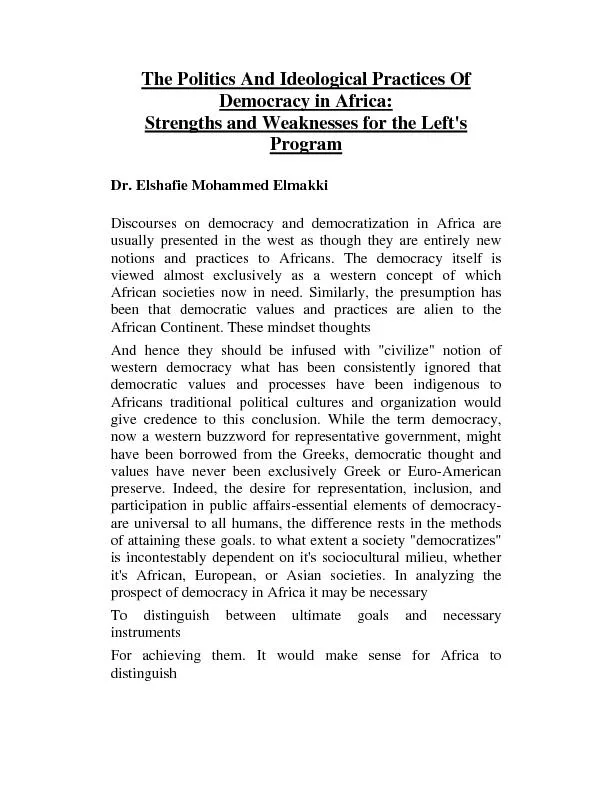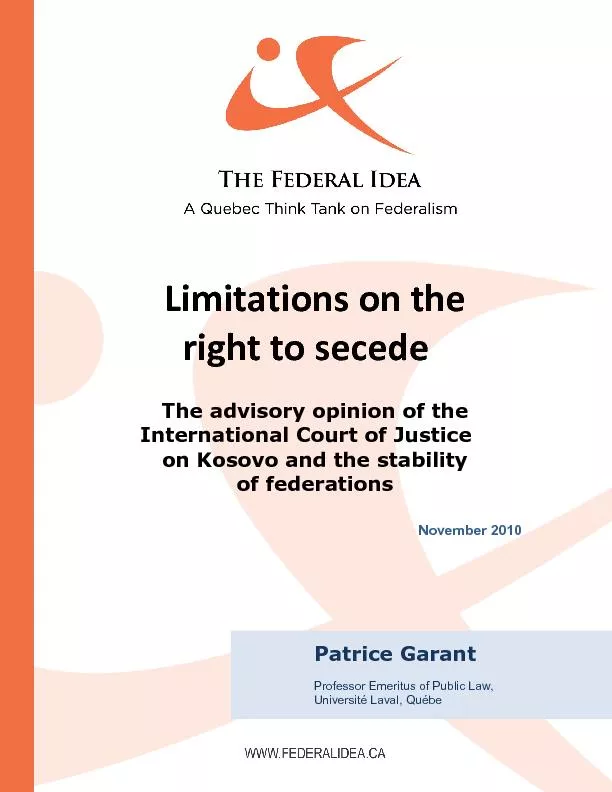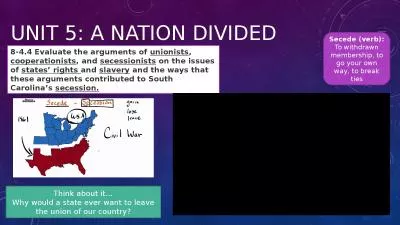PPT-Right to Secede
Author : faustina-dinatale | Published Date : 2017-10-31
Was the South Right Jefferson Davis Jefferson Davis President of the Confederate States of America was one of the ablest spokesmen for the right of states to secede
Presentation Embed Code
Download Presentation
Download Presentation The PPT/PDF document "Right to Secede" is the property of its rightful owner. Permission is granted to download and print the materials on this website for personal, non-commercial use only, and to display it on your personal computer provided you do not modify the materials and that you retain all copyright notices contained in the materials. By downloading content from our website, you accept the terms of this agreement.
Right to Secede: Transcript
Download Rules Of Document
"Right to Secede"The content belongs to its owner. You may download and print it for personal use, without modification, and keep all copyright notices. By downloading, you agree to these terms.
Related Documents












![[PDF READ ONLINE] Starting Off Right in Law School (Starting Off Right Series)](https://thumbs.docslides.com/1020243/pdf-read-online-starting-off-right-in-law-school-starting-off-right-series.jpg)

